The Accidental Textile Archaeologist
We are thrilled to have regular contributor Christina Pappas back on the blog today – take it away, Chris!
So here’s the thing – I wasn’t supposed to be an archaeologist, let alone a textile archaeologist.
When I was in high school, I was the epitome of the nerdy art student. I always had paint on my clothes and a sketchbook tucked into my backpack. My plan was to go to college and study art; I even had a partial scholarship to help. My senior year, when I should have been putting my portfolio together, I was daydreaming about a different path. I loved history, and my constantly stained clothes proved I didn’t mind getting dirty, so I started thinking about what else I could do.
For a class project I had interviewed the curator of Egyptology at the Brooklyn Museum of Art. He was an archaeologist and told me what his job was like. He was brutally honest about the hard work and low pay, but it was still the most exciting job I could think of. I did a bit of research and found an archaeology program with an emphasis of hands-on experience. My parents were surprised but supportive, though my dad did encourage me to take ‘a nice accounting class’.
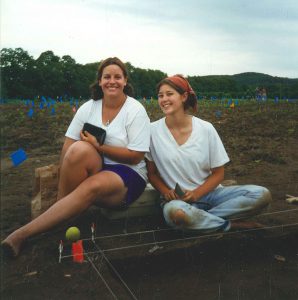
My first archaeological dig! My friend Ruth (right) and I (left) in the Allegheny National Forest, circa 1998. Alas, we did not find any textiles that summer.
Mercyhurst University is a small liberal arts school located in northwestern Pennsylvania on a hill overlooking Lake Erie. Students in the Anthropology program were expected to work in the labs, either through work-study or on a volunteer basis. Even as a college freshman, you were expected to be there. The work was not glamorous – I washed and labeled artifacts (mostly window glass!) – but I loved it.
After your freshman year, you chose a specialty and started working under a professor with that expertise. You could study stone tools, ceramics, historic artifacts, or perishables and textiles. I will admit that I had no idea what I wanted to do. I was much more interested in my social life at that point and the cool kids of our department all worked in the perishables lab. That’s right folks: I did not choose to study perishables and textiles because I saw their importance in explaining cultural process or because I had a burning desire to understand the technology of textile production. I wanted to hang out with the cool kids.
I’ll let that sink in for a minute.

Hard at work in the perishables lab, sometime in late 2000. The perishables lab has continued to change and today’s lab is very different from when I was student. The training, however, is still as rigorous today as it was nearly 20 years ago.
At the time, the perishables lab was directed by Dr. James Adovasio, one of the foremost experts on archaeological textiles (he’s better known for his work at Meadowcroft Rockshelter and peopling of the New World – but that’s a different story for another day). In hindsight, I realize now how fortunate I was to work under him, but at the time I was just really excited. My goal of hanging with the cool kids was quickly set aside. I loved working in the perishables lab! My first project was working on carbonized textiles and yarns from a Bronze Age site in Jordan. These fragments of cloth were thousands of years old and woven from carefully spun linen thread. I learned to identify the different textile weaves, how to pick apart the structure of a plied yarn, how to see all the tiny decisions that went into the making of the object. That’s what pulled me in.

Carbonized linen textiles from an early Bronze Age site in Jordan. These textiles date to approximately 2350 BC and were among the first objects I worked on in the perishables lab.
As fiber folk, we all know the feeling. You look at a handmade textile and you see not just a pretty object, but the hours at the loom or knitting needles, the fiber drafting at the wheel, the alchemy at the dye pot, even the shepherds with their flocks. You can see all the steps and decisions that went into creating that object, all the places where one path or another was chosen. Archaeologists are constantly trying to trace back those paths, to see those moments when a decision had to be made and why. The whys are how we learn about culture in the distant past. We can look to the past and see when and why spinning one kind of fiber over another was chosen, what changes were happening that lead to that decision, and what were the ramifications of that decision. Best of all, we can take what we learned from those ancient decisions and apply that knowledge to the same kinds of problems we face today. Want to know how today’s cotton farmer should respond to increasingly arid conditions? Let’s see what they did 2,000 years ago and how it panned out.
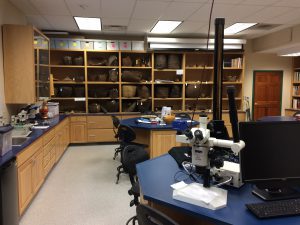
The current perishables lab at Mercyhurst
My career (thus far!) has been full of happy accidents. I missed the deadlines to apply for an internship at the Metropolitan Museum of Art in New York City my junior year of college so I wrote a letter asking if I could volunteer. My dedication and enthusiasm impressed the head of the Textile Conservation department so much that she used her own research funds to hire me as a conservation assistant for the summer. I would work on and off at the Met for the next three years learning everything from basic object care to what scanning electron microscopes can tell us about textiles (it’s a lot – especially when you’re working with gilded yarns).

I analyzed textiles impressed in pottery to see how social organization changed after political collapse during the Late Prehistoric in Kentucky.
I came to graduate school at the University of Kentucky intending to study the earliest Americans but once again found myself drawn the to the kinds of cultural questions textiles can help us answer – how do we respond to change? I looked at impressions of textiles in pottery to see how cultural groups reorganized themselves after the collapse of their political system, a surprisingly relevant topic in today’s world. Along the way, I worked with textile collections from the Sudan, Egypt, Asia, Peru, and of course, Kentucky. No matter where you find yourself in the world, textiles are a language spoken by everyone.
Through it all, I’ve always found the easiest way to understand textile production was to learn how to do it myself. What better way to know what can influence the choices of a spinner or weaver than to become one? I still advocate that anyone who wishes to study ancient textiles needs to learn how make them and any student who works with me finds themselves with a spindle in hand before too long.
These days, most of my research is focused on the ancient yarns and textiles from dry rockshelters in Kentucky and the greater southeast. At work, there are still plenty of opportunities for surprises. Yesterday a collection of textiles from an 1895 time capsule in Louisville showed up on my desk. I’ll need to clean and analyze them to see what they can tell us about life in Louisville 120 years ago. There’s always something new to learn!

Chris is an archaeologist by day and a fiber fanatic by night who is happiest when she can be both at the same time. She lives in Kentucky with her husband, adorable baby girl, and two crazy beagles.


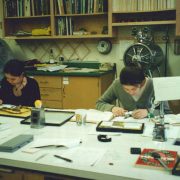
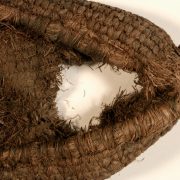
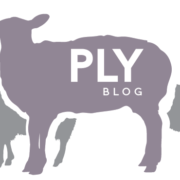


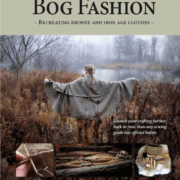


Living history is the best!!! And Chris, it’s where *ALL* the cool kids are 🙂
Dear “Cool Chris” –
Thanks for sharing your educational and professional journey. It’s a path I wish I had been exposed to earlier in life. Haven’t seen any recent contributions to PLY recently and miss your writings.